Tag: All GI Exclusives
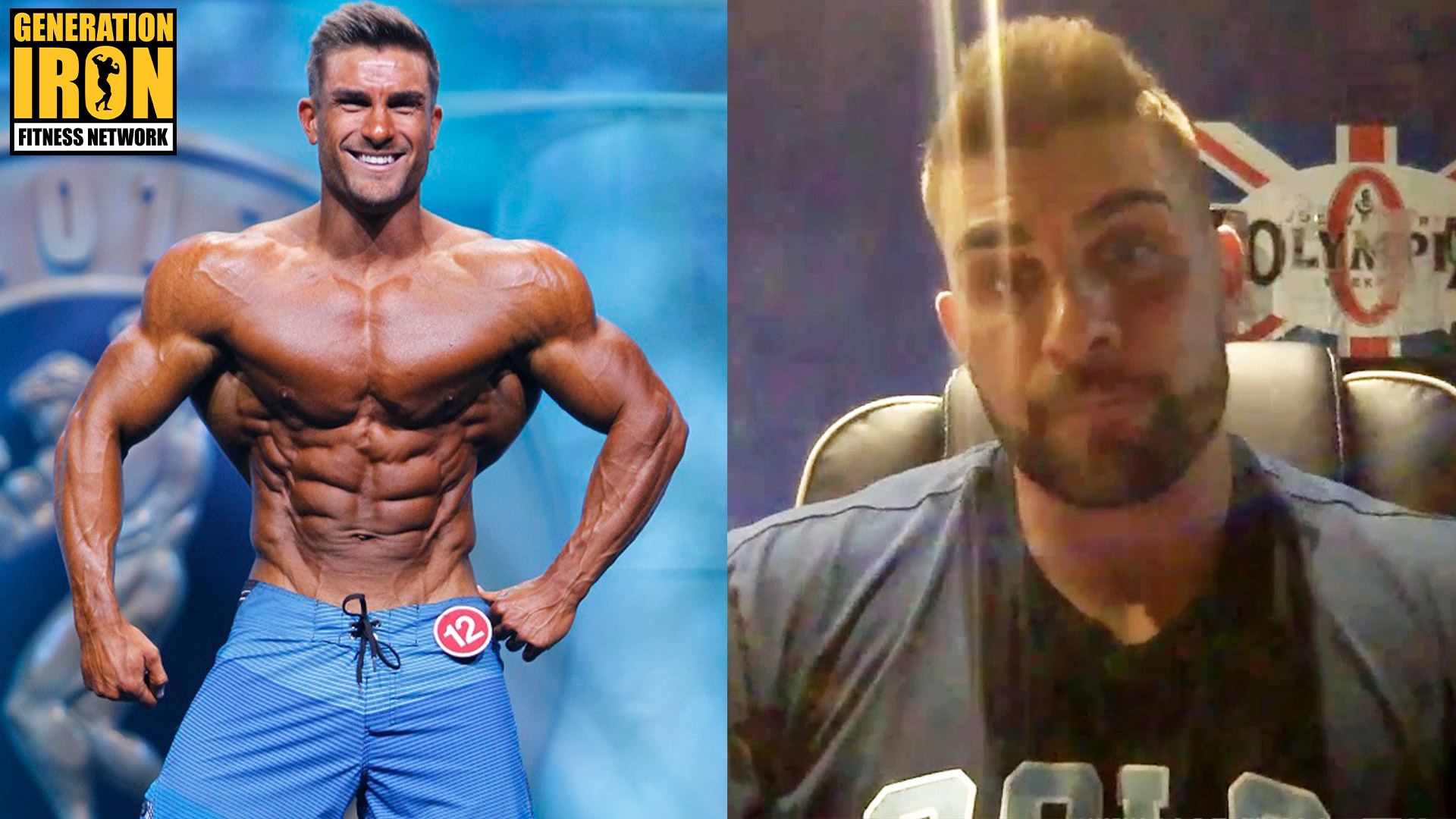
Ryan Terry: There Should Be A Weight Limit On The Men’s Physique Division
[embedded content]
Ryan Terry muses that a weight limit on Men’s Physique would help prevent physiques from growing bigger each year.
In a previous interview segment, Ryan Terry lamented the way Men’s Physique has changed over the past decade. Specifically, he believes that the physiques have gotten larger with each year – and it’s starting to look less like the original goal of the division. With the relatively recent introduction of Classic Physique, Terry believes the divide between Men’s Physique and Classic Physique is shrinking. His solution? Add a weight limit system to Men’s Physique similar to Classic. Ryan Terry discusses why he believes a weight cap on Men’s Physique would benefit the future of the division in our latest GI Exclusive interview.
Early into our conversation, Ryan Terry admits he may be a bit biased on his opinions of the direction Men’s Physique is moving towards. Terry sees himself as a smaller sized athlete in his division – and he believes that Men’s Physique as a whole has gotten too large. But in trying to be as objective as possible, Terry worries that Men’s Physique is growing too large in comparison to where the division started.
Classic Physique is a relatively new division that was introduced in late 2016. It was an answer to many fans worrying that Men’s Open has gotten too large compared to the Golden Era of the sport. This new division imposes weight limits based on height to ensure the physiques cannot grow too large. This kind of strategy is attractive to Ryan Terry. He believes that if Men’s Physique adapted to this ruleset (but on a smaller size scale), it would help prevent the division from losing sight of it’s original vision.
It’s almost inevitable that every division’s physiques grows in size over time. As each athlete tries to one up each other, they push the boundaries of size while trying to still match the aesthetic of the division. Over time, the slow change shifts the bar of expectation for judges and fans. Suddenly, a decade later, the physiques of a division look completely different.
This happened to Men’s Open – which is why slowly over time new divisions such as Men’s 212 and Classic Physique entered the sport. But now with so many divisions, Ryan Terry worries that Men’s Physique will start to look too close to Classic Physique. In his opinion, changing the Men’s Physique rules to include a weight limit based on height will fix this problem.
Of course, there are already other factors in place to differentiate Men’s Physique from other divisions. The board shorts change the overall areas that judges look at for scoring. Also the posing rounds are different. A big part of Men’s Physique posing is a “natural standing” pose – as opposed to the more showy mandatory poses found in Classic Physique and above. While seemingly small these are vital differences.
Does Men’s Physique need a change? Is the division growing too large in terms of physique size? Watch Ryan Terry’s full comments in our latest GI Exclusive segment above and then decide for yourself!
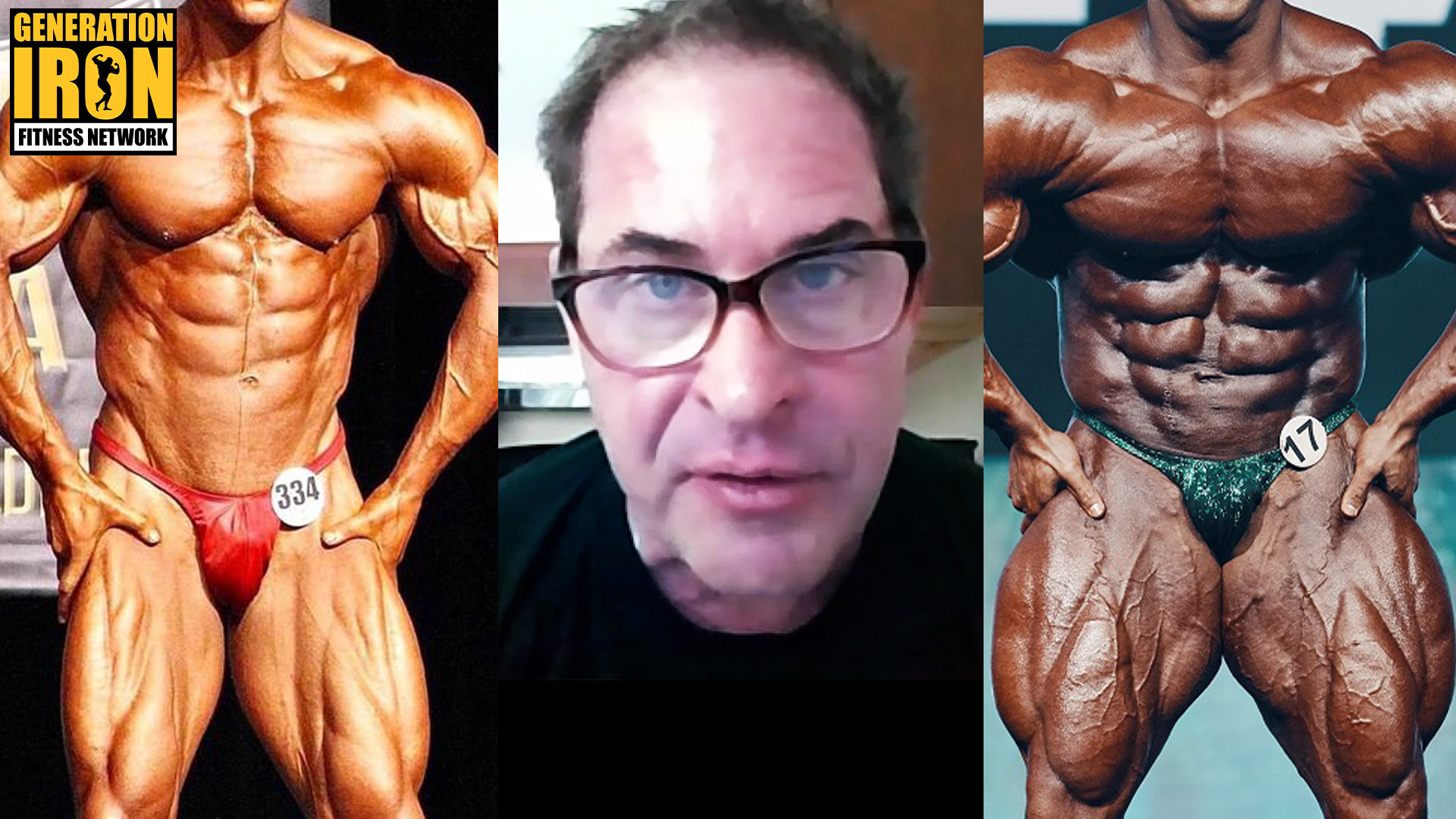
The Anabolic Doc Answers: What Do Bodybuilding Fans Really Want? Natural Or Enhanced?
[embedded content]
The Anabolic Doc debates with Vlad Yudin: Will fans really abandon pro bodybuilding if strict drug testing were applied to all leagues?
There’s no doubt that natural bodybuilding leagues such as the INBA/PNBA have been growing over the past decade. But the IFBB still holds strong as the most watched and widely seen league in competitive bodybuilding. While they don’t condone drug use – the IFBB differs from natural leagues by not conducting drug tests. This is true of many pro leagues that do not hold the term “natural” in their title. This begs the question – are untested pro leagues more popular because of the drug use? Will fans abandon these leagues if they were to start strict drug testing? In our latest GI Exclusive interview, the Anabolic Doc shares his thoughts on fan reactions to natural bodybuilding.
Generation Iron: Natty 4 Life was a film that dove deep into the world of natural bodybuilding – revealing a collective of passionate athletes and passionate promoters who want to dedicate their love of bodybuilding to fair drug tested competition. This dedication feels more prescient than ever due to the recent too-soon deaths of many competitive bodybuilders in the sport. While nearly all of these deaths have no announced cause at the moment – the conversation about health for athletes has reached an all time high.
That’s why during our conversation with Dr. Thomas O’Connor, aka the Anabolic Doc, we asked for his opinion on the bodybuilding fanbase as a whole. Namely, do bodybuilding fans want a safer more natural version of bodybuilding? It’s no secret that, while growing, natural leagues still fall behind the IFBB when it comes to mainstream attention. Fans seem to want a safer sport – but not want to sacrifice the mass monster size that has come with PEDs.
The Anabolic Doc thinks that this hypocritical separation comes from a base need in our DNA. Ever since the earliest times of history – humans have been entertained by violent spectacle. The Roman gladiators are used by an example by the Anabolic Doc. Fans separate the men and women from the spectacle – and desperately want to believe that the drug use isn’t the main cause for health issues.
Of course, the Anabolic Doc had dedicated his life to anabolic research. So he knows that continued drug use on a scale seen in pro bodybuilding is definitely dangerous. Despite this, the bar has been set too high in terms of expectations for physiques. It can come at a cost for athletes – but so long as they are willing to take that risk, fans will be enamored with the results.
That being said, the Anabolic Doc also believes that the dislike for natural bodybuilding is overstated. He thinks that the online world has created a loud hateful minority that takes all the spotlight. Perhaps as natural bodybuilding leagues such as the INBA/PNBA continue to grow – we will see a shift in terms of health. But that shift will happen slowly. Perhaps the recent deaths in bodybuilding will be the first chapter in a long book of change.
You can watch the Anabolic Doc’s full comments on natural bodybuilding vs untested bodybuilding in our latest GI Exclusive interview segment above!
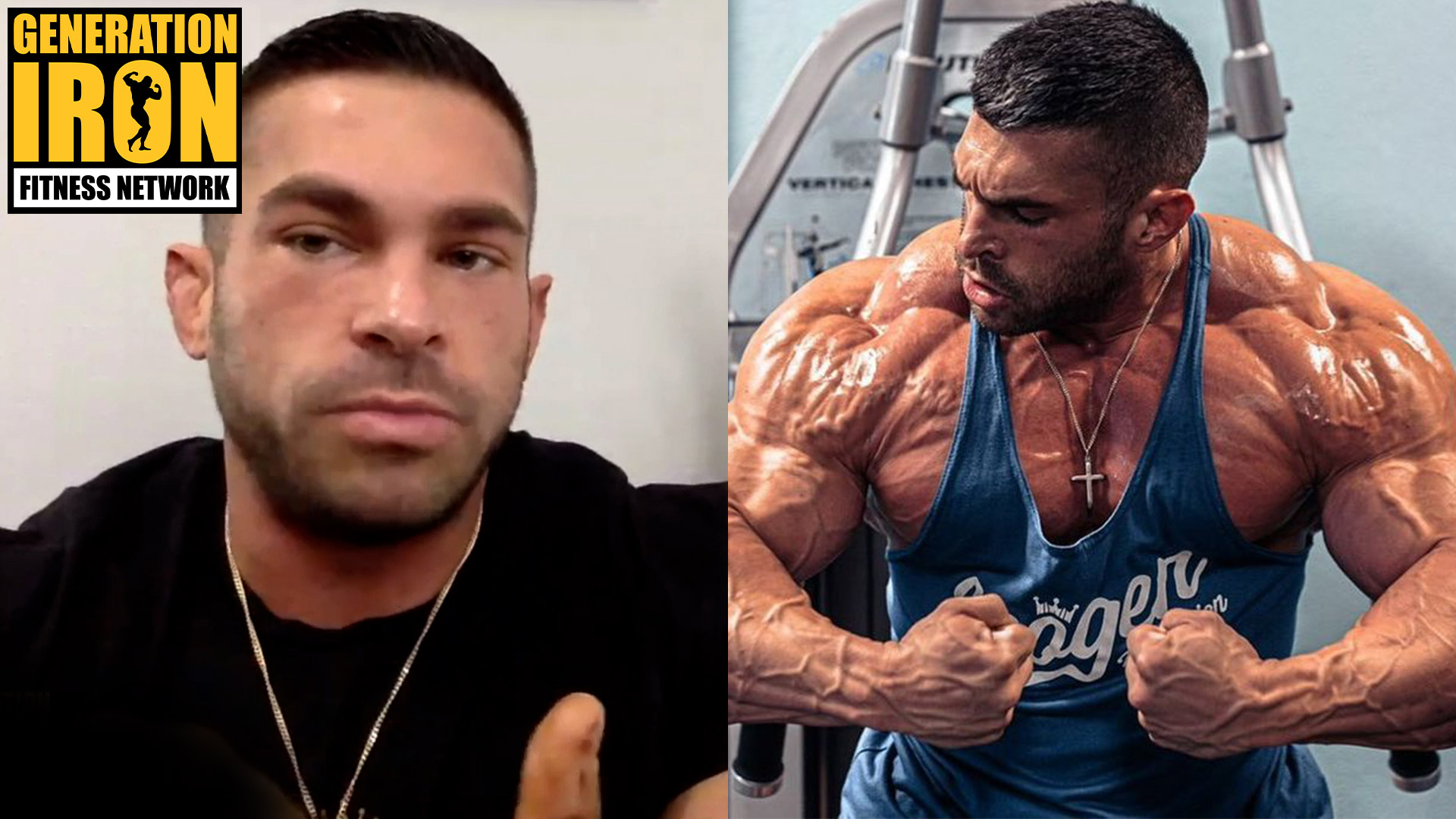
Derek Lunsford Reveals The Machine-Like Specificity Of Training With Hany Rambod
[embedded content]
Derek Lunsford On Hany Rambod’s Intense Training: “It Was Almost Like I Had To Count The Breaths In A Day”
Derek Lunsford has been on top of the world in 2021 – specifically due to his epic win at the Men’s 212 Olympia. As a true passionate man of bodybuilding, his excitement has been infectious since winning the Olympia. And it seems that excitement and passion is matched by his extremely focused training ethic that earned him the victory. A big part of his training and diet routine came in the form of legendary trainer Hany Rambod. The two linked up just 10 months before the Olympia 2021.
In our latest GI Exclusive, Derek Lunsford goes into great detail his experience working with Hany Rambod. In particular, he reveals the machine-like specificity behind Rambod’s program. In no way meant as an insult, he expresses that nearly every single second of his life was calculated towards the final weeks before the Olympia. It was that level of detail, matched with his passion, that helped him break through to the next level and win the biggest show of the year.
Hany Ramod is well known as a legendary guru and trainer for many decades. His FST-7 program has been much touted in the industry. He’s also best known for coaching seven time Mr. Olympia Phil Heath. That same magic and talent was lended to Derek Lunsford. It was a typically shorter lead up time that Rambod is used to – but the two worked together to pull off an amazing feat by the time Olympia 2021 rolled around.
“He coached my mind just as much as he coached my physique,” Derek Lunsford stated in our interview. He continued, “That was actually the first thing he said was, ‘I’m a trainer first. I’m going to coach you and train you first – not just give you a meal plan.’”
Derek Lunsford then went on to explain just how hands on and detailed Hany Rambod was as they drew closer to the Olympia 2021:
“At the very end, I think that’s the biggest thing, the very last week things were very, very specific. The last two to three weeks I was taking notes, being very diligent, on everything I was doing. It’s almost like I had to count the breaths in a day it felt like. Not literally but it just felt like – every time I went to the bathroom or took a nap or did cardio or ate this meal or whatever… I was writing it down. Everything that went into my body or everything that I did physically was being calculated.”
What’s most inspiring about hearing Derek Lunsford talk about his intense contest prep, is how much he seemed to be loving it. Bodybuilding contest prep can be very grueling and bring out the worst in people’s moods during those final weeks. While this may have happened to Lunsford – in retrospect he speaks so lovingly and passionately about the entire experience.
That mentality is the kind of outlook needed to become a champion. It’s no wonder he was able to become the Men’s 212 Olympia victor. Lunsford speaks later in our interview about how excited he is for 2022. His successes this year was simply after 10 months working with Hany Rambod. As he noted earlier, Rambod typically takes more time with his athletes. So in Lunsford’s mind – there is no where to go but up from here.
You can watch Derek Lunsford go into extreme detail about his Olympia 2021 training regimen by watching our latest GI Exclusive interview above!
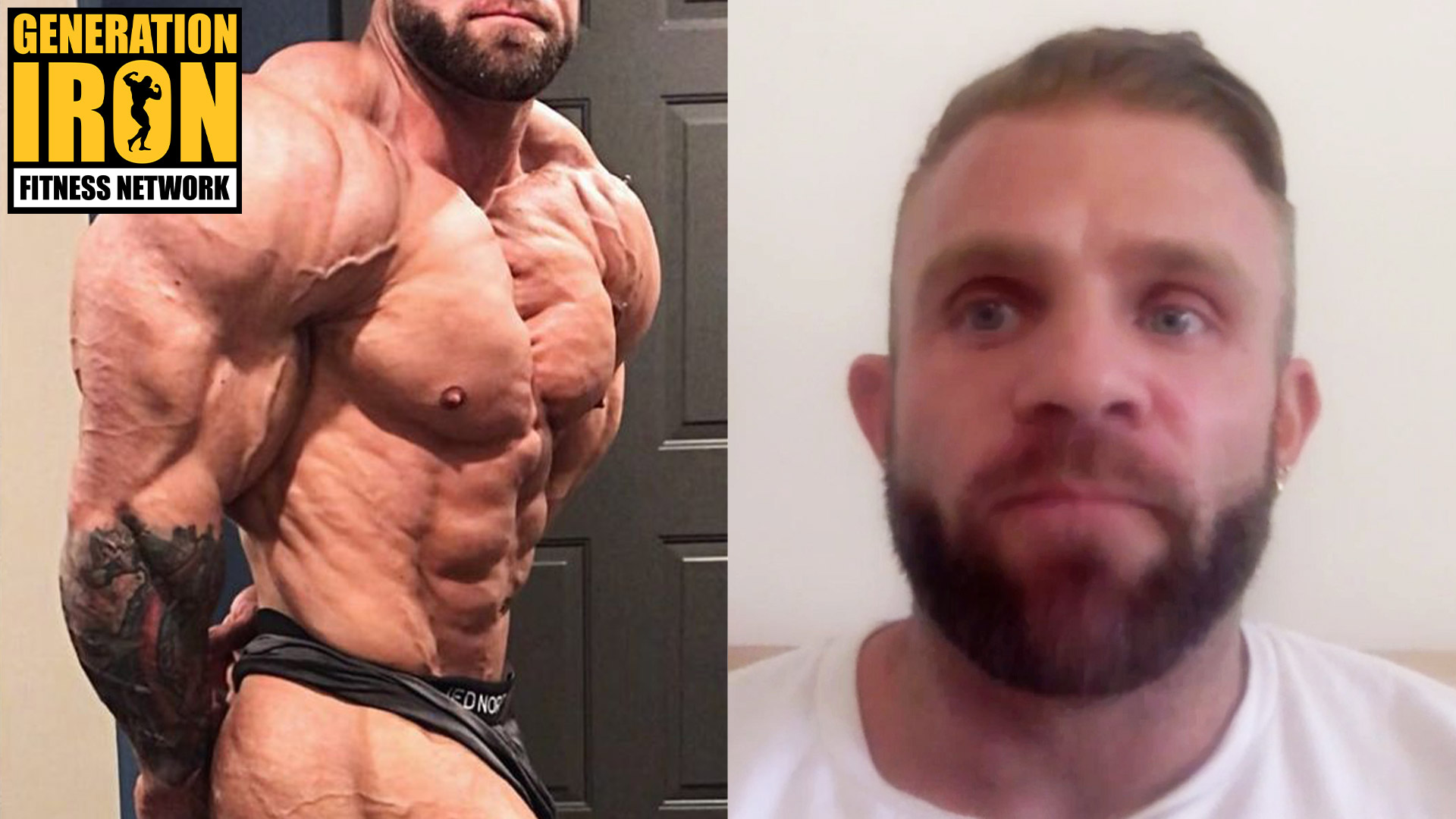
Iain Valliere: How Progress Pictures Can Be A Double-Edged Sword For Bodybuilders
[embedded content]
Iain Valliere shares his opinions of pro bodybuilders sharing progress pictures leading up to a competition – and how it can both help and hurt the athlete.
Back in the day, bodybuilding fans had to wait for magazines to see updates on their favorite bodybuilders. This meant that we couldn’t get the kind of moment to moment physique updates that we see in today’s bodybuilding world. Now fans can see what an athlete’s physique looks like mere hours before they step on stage. But how does this affect the mindset of the athlete going into a competition? In our latest GI Exclusive, Iain Valliere breaks down the pros and cons of sharing progress pictures before a bodybuilding show.
Dorian Yates was known as The Shadow due to the mysterious nature of his training. Partially because of being located in the UK – he would hide all updates about his training and physique until the day of the show. His massive and shocking physique shocked audiences and judges alike. Today, that notion of withholding information is foreign for most of the bodybuilding industry. This is due to social media and direct updates from the athletes.
Iain Valliere points this out early in our discussion about progress pictures. He explains that for some athletes – mystery and anticipation work in their favor. For many others, progress pictures have become part of an athlete’s brand. Transparency, interaction with fans, and constant updates help keep a bodybuilder’s following engaged right up to the moment of the competition.
But Iain Valliere doesn’t think it’s necessarily a better thing. Ultimately, it depends on what works best for the athlete at the center of it. Post progress pictures invites not only fan feedback but also feedback from fellow athletes and coaches. That wave of feedback can get into a bodybuilder’s head. It sounds silly – but competitive bodybuilding is a sport about looks and judging looks. If comments start to cause mental turmoil – it can affect a bodybuilder’s prep.
That’s why Iain Valliere believes that a bodybuilder needs to take a deep look into what really works for each individual. If a bodybuilder has tough skin against comments online and can focus on the prep without issue – then progress pictures can be a great way to build a following and keep engagement fresh.
For others, it can lead to second guessing prep decisions. Even worse, it can lead to a bodybuilder putting energy into reacting and responding to criticism that takes away from the actual work needed to improve. If a toxic environment grows from progress pictures – it can create a mental headspace that leads to less motivation and less fruitful contest prep.
Iain Valliere admits there is no right answer as to whether instant progress pictures are better or worse than the former way of bodybuilding life. But what is important during this transitioning time of technology is for each athlete to really understand his or herself. What is the ultimate goal of posting a progress picture? Will the benefits outweigh the detriments? That depends on each person’s headspace.
While the decision is seemingly flippant – studies have increasingly shown how addictive social media can be – and how affecting it is on a person’s mood. Iain Valliere believes that, while simple on the surface, the decision to post your physique on social media should be a well thought over business decision. It can have small effects that eventually add up to hurt or help an athlete’s entire career. The decision should be treated as such.
You an watch Iain Valliere go into detail about progress pictures in our latest GI Exclusive interview segment above.
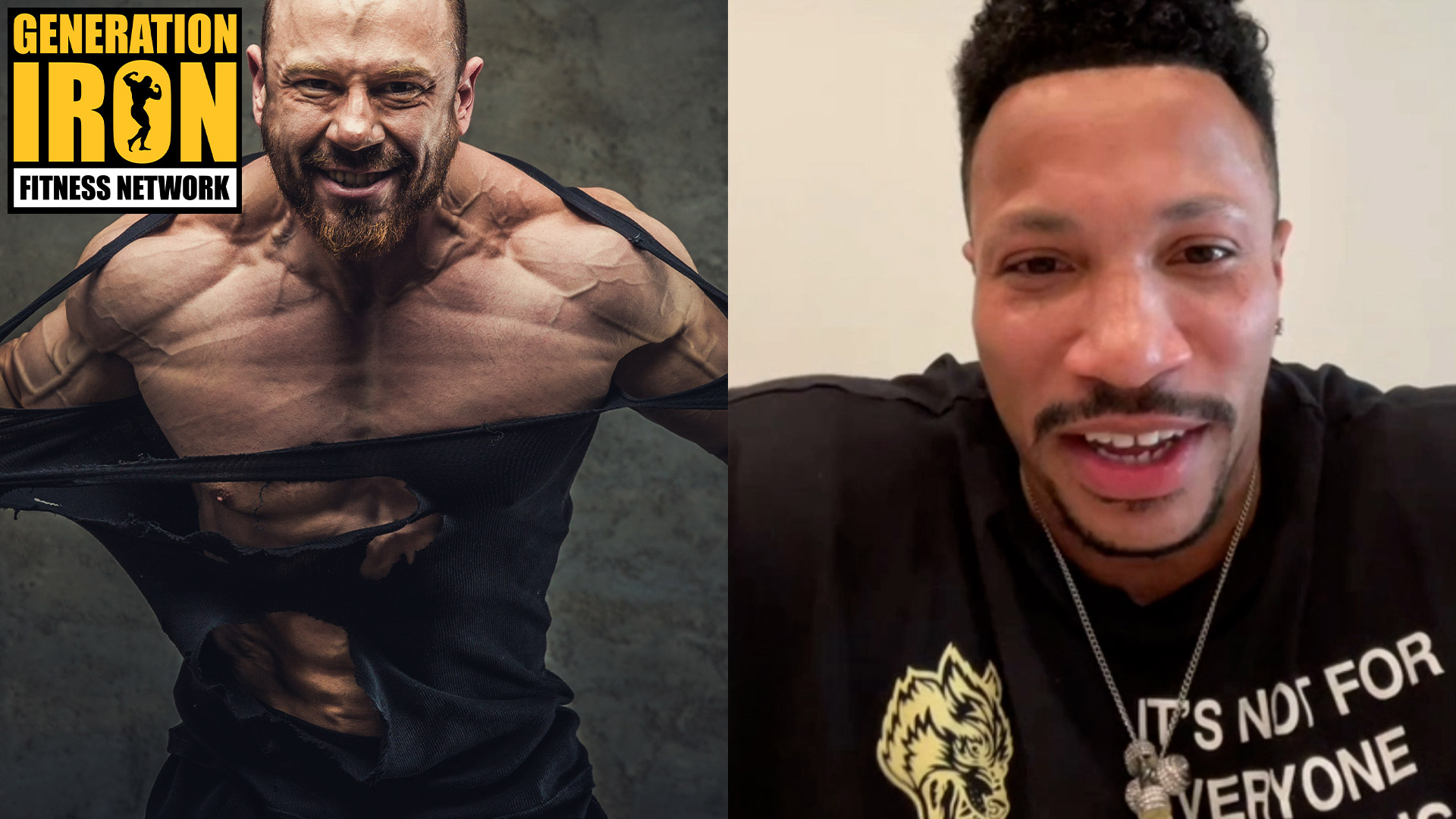
Patrick Moore On Trash Talk: “It’s Hard For Me To Take It Seriously”
[embedded content]
Patrick Moore: “Fans need to keep in mind that we are not literally trying to kill each other.”
The spectacle of bodybuilding has been a point of conversation for many years now. Since the beginning of bodybuilding’s entrance into a more mainstream culture – rivalries have peppered each era. Some find it to be a vital way to build interest and grow the sport. Others see it as a distraction that degrades the integrity of competitive bodybuilding. In our latest GI Exclusive interview, Patrick Moore shares his opinions on trash talk and rivalries – when it’s helpful and when it goes too far.
As a former boxer, Patrick Moore has a different viewpoint on trash talk and rivalries. In the boxing ring, the trash talk all adds up to an actual physical battle. One person walks away a clear victor (mostly) due to a literal fight. In bodybuilding, judges decide who wins and the competitors cannot affect the other athletes’ outcomes. They can only focus on themselves. It’s this vital difference that makes Moore find trash talk in bodybuilding a joke.
“When I see it [trash talk] I just really can shake my head because being a fighter, a former boxer. Even when we talk trash we can go in and – well we were fighting,” Patrick Moore states in our interview. He continues: ”
We were literally trying to knock each other out. And when it was over we would shake hands, we’d go grab a bite to eat… bodybuilding we are on stage in underwear. And if you really break it down we are being judged by strangers… it’s a subjective sport… So the trash talking where we can’t ultimately do anything to the other person. Because of where I come from I can’t really draw a parallel.”
Patrick Moore admits that trash talk can help build excitement – but he believes that both fans and some athletes end up taking it too seriously. We all need to be aware of the social contract we sign with bodybuilding personas. What is said between athletes on social media should not be considered gospel. Most of the time, the athlete are perfectly friendly in real life.
“I mean I think it has its place. As long as the fans understand when we see each other, we’re cool… if you understand how sports work sometimes. Words can get heated but that’s all it is.”
Ultimately, Patrick Moore would rather focusing on confidence rather than trash talk. He has no qualms stating when he thinks he is better than other competitors. He doesn’t see that as trash talk – just confidence in the work he’s put into himself. While some might take it personally – Moore would rather not take too much energy commenting back and forth. He sees that energy best placed into his training and diet and focus to win the show.
That being said, he has been pulled into a few trading of barbs in the past. We’re all human – but he almost always walks away from it with nothing personal held against the other person. It’s all part of the heated energy leading up to the show. It’s not real life. The real work happens in the gym, the kitchen, and on the stage.
You can watch Patrick Moore’s full comments in our latest GI Exclusive interview segment above!
WATCH: An Inside Look At The Natural Olympia 2021 | Backstage, Posing Routines, & Awards
[embedded content]
A visual deep dive into the Natural Olympia 2021 competition.
November 11-13th, 2021 held the Pinnacle of Natural Bodybuilding – the Natural Olympia. This is the biggest event of the year for the INBA/PNBA natural bodybuilding league. Much like the IFBB Pro’s Mr. Olympia – it showcases the best athletes from across the world who have fought to qualify for this yearly event. With strict WADA drug testing guidelines to ensure that all athletes are natural – this event is the biggest weekend of the year for natural bodybuilders across the world.
Generation Iron was on the ground floor reporting on the event as well as capturing footage with our camera crew. We captured a behind the scenes and on stage look to give a full encapsulation of the event. With 20 divisions across both traditional and masters categories – this is one of the most super-sized bodybuilding events in the world.
You can watch our full behind the scenes look at the event above. Read on to get a full break down on the details of the Natural Olympia 2021. You can also check out our official results from the event right here.
What Defines INBA/PNBA Natural Bodybuilding?
There are many natural bodybuilding leagues – but the INBA/PNBA is certainly the biggest – reaching across the country and having athletes representing over 15 different countries across the globe. While nearly all pro bodybuilding leagues claim to condemn steroids – only certain leagues dedicate themselves to drug testing athletes before every competition. The INBA/PNBA leads in this regard. They use the most technically advanced drug test system (WADA – which is used by the Olympics) to ensure fairness across all athletes and competitions.
How The Drug Testing Works
The INBA/PNBA league uses the most sophisticated and advanced drug testing system in professional sports – the World Anti-Doping Agency (also known as WADA). WADA testing is the same system used for the Olympics every four years – and is known for it’s accuracy and quality.
The INBA/PNBA league uses WADA testing before every major competition. If a pro natural bodybuilder should fail the test, their titles are revoked and they are placed on the INBA/PNBA Wall Of Shame – a virtual list of competitors who have attempted to cheat the competitions and drug tests.
How The Judging Works
The Natural Olympia is a natural show which means that there are some differences from the IFBB shows. The biggest distinction when it comes to judging is the size of the athletes. There is not as much muscle mass for natural athletes as opposed to IFBB competitors, specifically Men’s Open. Despite the difference in size, athletes compete in similar categories.
In the Men’s Physique division, competitors perform bodybuilding poses and a T-walk. The judges have to adjust because the muscle mass is smaller despite the level of conditioning remaining high. Athletes can qualify for the Natural Olympia by competing in one PNBA competition. This has to be a professional show and they do not need to win a specific placing.
The Divisions
While there are a lot of similarities – the INBA/PNBA features a wider array of divisions that might seem familiar but with a slight twist on the typical formula you see in an IFBB Pro show. Below is a quick list of the full divisions (please note that each division also has a masters counterpart for ages 40+.
Men’s Bodybuilding Open
Men’s Classic Physique Open
PNBA Angels
Figure Classic
Men’s Sport Model Open
Women’s Sport Model Open
Women’s Physique Open
Figure Open
Bikini Divas Open
Men’s Physique Open
Women’s Bodybuilding Open
The goal for the INBA/PNBA is to provide as many opportunities for athletes to compete. Whichever physique type goal an athlete might desire there is a division for it – so long as there are enough competitors interested in competing.
Creativity is also rewarded across these divisions. The PNBA Angels must showcase custom made costumes as part of their routines. Other divisions such as the Men’s Classic Physique also usually feature some element of a costume to coincide with the posing routines.
Wrap Up
There’s no doubt that the INBA/PNBA’s Pinnacle Of Natural Bodybuilding Natural Olympia is the biggest natural bodybuilding event on the planet. This year’s showcase was no different – and we were excited to provide a deeper inside look than traditionally seen over the years. You can watch our full recap and behind the scenes look in our GI Exclusive video above.
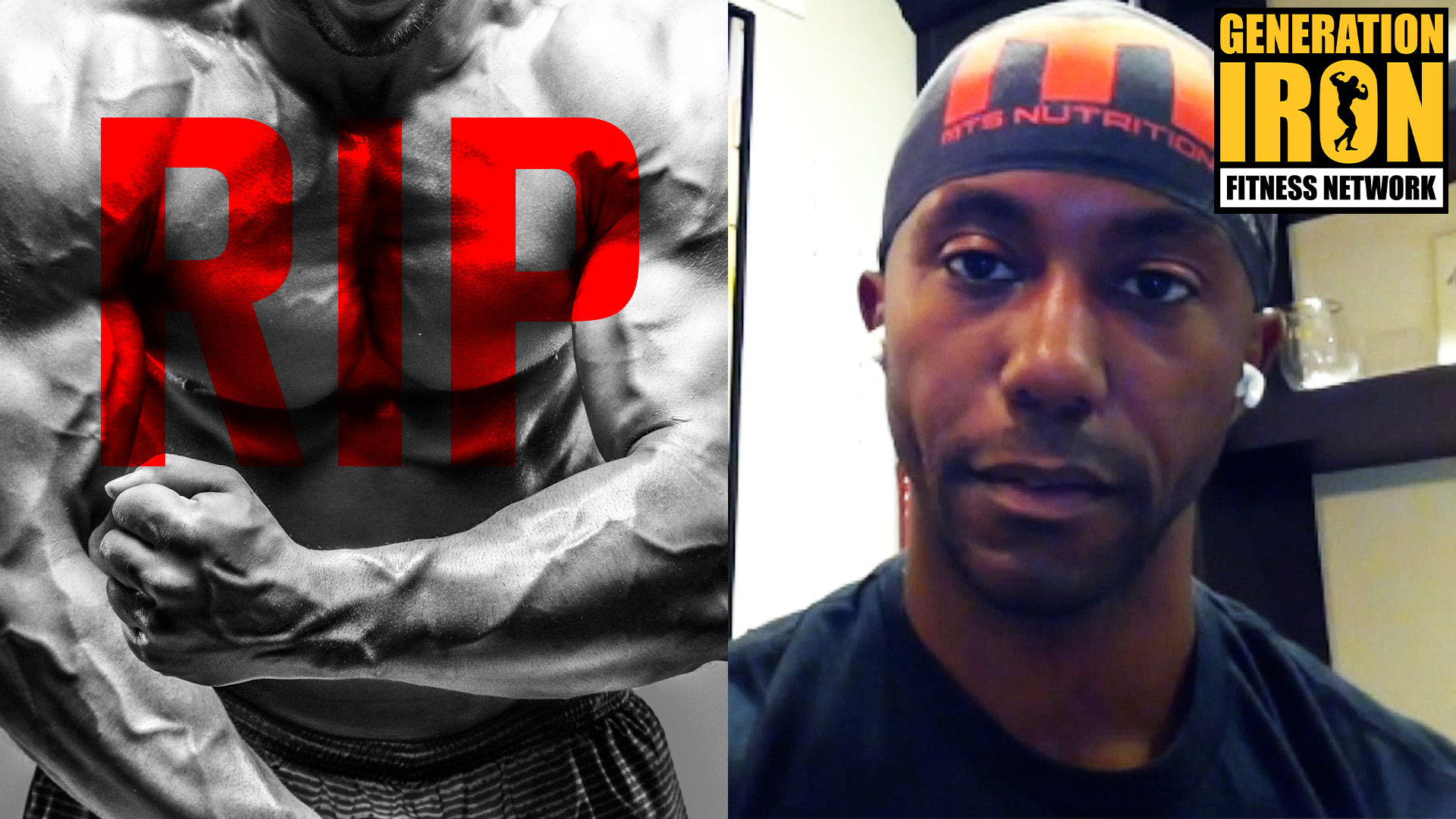
Colin Congo: It’s Naive To Think Drugs Are Not Related To Bodybuilding Deaths
[embedded content]
Colin Congo finds it “appalling” and “scary” how many young bodybuilders are dying and believes drug use cannot be discounted.
Colin Congo is a pro natural bodybuilder in the INBA/PNBA league. As such, he is subject to drug tests for any pro show that he wants to compete in. He finds this important, not only for the integrity of the sport but also for the health of its athletes. Congo has been paying attention to the recent deaths in bodybuilding as a whole and is worried about the trend he’s seeing. While we don’t know the cause of death for many of these athletes – Congo thinks drug use cannot be discounted from the conversation. In our latest GI Exclusive interview, Colin Congo explains why it is naive to assume there is no relation between drug use in bodybuilding and the tend of young deaths in the sport.
It is important to note the difference between correlation and coincidence. Just because something seems to be happening suddenly doesn’t mean they are all related. This distinction seems to be at the core of the recent deaths we have been seeing in pro bodybuilding. Many athletes have recent passed at a much too soon age. Some see this as a warning sign of health issues in the sport. Others point out that, without a real cause of death announced in any of these cases, these deaths could be a very tragic coincidence.
In either case, it’s important for all leagues to take this moment seriously. Even if this does turn out to be a coincidence – it’s most important to know this for sure to avoid potential more lives lost in the future. That’s why during our recent conversation with natural bodybuilder Colin Congo, we asked for his thoughts on the string of recent deaths and controversy surrounding them.
Colin Congo, being a natural bodybuilder, certainly has a bias against drug use in the sport (It should also be noted that other pro leagues do not endorse drug use either – but simply do not provide testing). When asked if he thinks that drug use in pro bodybuilding is responsible for young deaths – Congo believed it is very likely this is the case.
“I think we’d be naive to think that there’s no relationship,” Colin Congo states in our interview. He continues:
“I mean, we are talking about folks that, especially the younger folks right? That are like, man, heart issues in their 20s? Yeah, I mean, there are people with heart issues that die in their twenties. But at the number that we see them in the bodybuilding world, in our sport, it’s appalling and it is scary.”
Colin Congo understands that studies would need to be done and hard facts to absolutely prove it. But he also thinks without the facts, it would be foolish to completely discount drug use as a cause completely. He also takes a moment to point out that natural bodybuilding leagues don’t seem to have these kinds of young tragic deaths happen. He mentions this specifically in relation to diuretic use in bodybuilding:
“It’s [diuretics] got guys going to the hospital routinely. You know, in the last couple of days pre-contest. The week of the show, you’re like, ‘Oh, he had to drop out because of this.’ And you’re like, man, you don’t see that with the natural guys I’ll be honest with you.”
Colin Congo goes on to say he understands the psychology of why bodybuilders would take risks and turn to drugs. When you are young and want to reach that next level – a person with championship goals will do whatever it takes to succeed. That’s why Congo likes drug tested leagues. Those regulations put a full stop on drugs being an option for success.
Do you agree with Colin Congo about drugs being related to pro bodybuilder deaths? Watch his Congo’s full comments in our latest GI Exclusive interview segment above and decide for yourself.
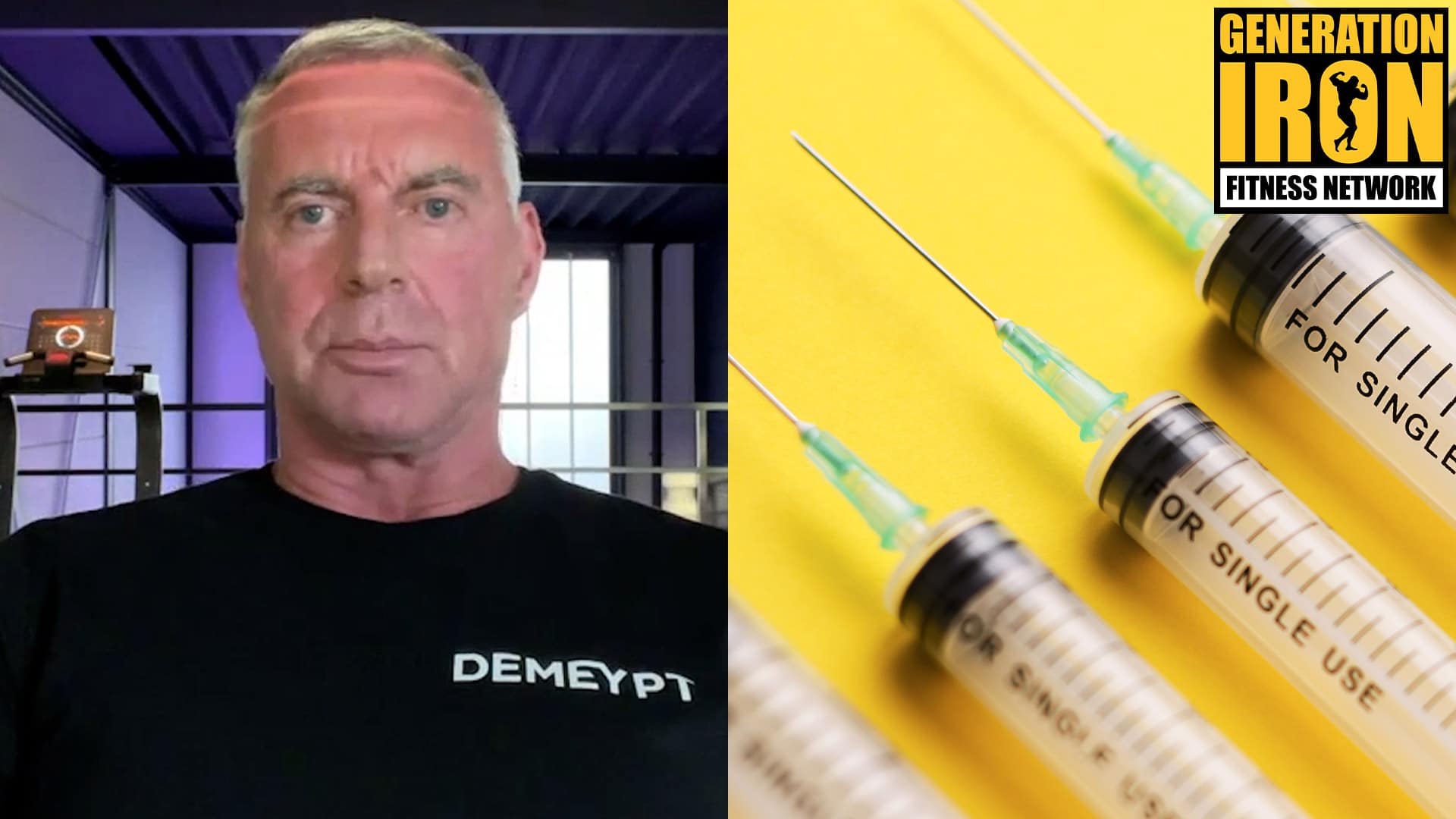
INTERVIEW: Berry De Mey Is “Shocked” By The Amount Of Drugs Modern Bodybuilders Use
[embedded content]
Berry De Mey believes that modern bodybuilders take far higher doses of drugs than past eras of the sport.
The health of pro bodybuilding athletes has been a topic of major discussion this past year. Sparked by many untimely deaths of competitive bodybuilders – many experts, athletes, and fans have been making public statements about their concern over the health of the sport as a whole. Have we finally reached a tipping point in the risk vs reward of drug use in bodybuilding? In our latest GI Exclusive interview, Berry De Mey explains his shock over the increase in doses and types of drugs modern bodybuilders use today.
Berry De Mey has been one of the more vocal bodybuilders speaking out about health in bodybuilding this past year. This has not only been sparked by the recent deaths in the sport – but also the physiques De Mey is seeing on stage. His reaction to the Arnold Classic 2021 earlier this year drew criticism. He has also clarified those statements in a previous interview with us – stating that “bodybuilding is becoming insane.”
We’re now pulling another segment from our conversation with Berry De Mey – this time focusing on the drug use prevalent in competitive bodybuilding today. Specifically De Mey shares his opinion on diuretics and insulin. He also speaks more broadly about the amount of drugs that athletes are taking during this era compared to his own. While he often clarifies that he is not a doctor – he finds himself worried about what he is seeing in the sport today.
While nearly all of the recent deaths this year have not announced official cause of death – many point towards diuretics as a possible cause. Especially for those that happened just before competitions. Diuretics are often used to dry out just before a competition – but accidentally overdosing on it can be extremely dangerous and possibly fatal. Victor Martinez just recently spoke with Generation Iron on his personal health scare involving diuretics before a show. Milos Sarcev did not want to go into specifics as he is not a medical professional – but he can confidently say it’s a dangerous drug used in the sport.
Berry De Mey also points out insulin as a very dangerous compound used by modern athletes. He admits that this was a drug available during his prime as well. He even sought it out as he wanted to do whatever he could to become the best. But his doctor refused to support insulin use – even when he was open about supporting use of other drugs such as steroids. This was enough for De Mey to avoid insulin – and looking back he’s happier for it.
But it’s less about one specific drug and more about the big picture. Berry De Mey believes that it’s an increased combination and higher doses of drugs that is the real issue. He claims to have seen lists of what young bodybuilders take today – and is “shocked” by what he sees.
“If I see some of the lists that they are all taking, I’m in shock,” Berry De Mey states in our interview. He continues:
“So of course yeah, diuretics is one of the things, but there is also a lot of other things that I am shocked about. Particularly in the amounts and the substances. The different kinds of substances.”
We then follow up asking him if he thinks that the amount of drugs taken today exceeds what he saw and used during his prime. He answered confidently and swiftly, “Most definitely.”
Ultimately, Berry De Mey understands the psychology of why this is happening. He was doing the same thing during his prime as a competitive bodybuilder. These athletes will always do whatever it takes to be the best – including many risks. The problem is that those risks are becoming increasingly bigger. De Mey can look back now in his older age and logically worry about the state of younger bodybuilders. But if he was young today – he’s sure that he would be part of the pack making these same decisions.
You can watch Berry De Mey’s full comments on diuretics, insulin, and overall drug use in bodybuilding by watching our latest GI Exclusive interview segment above!

Melvin Anthony Full Interview | Best Posers, How To Beat Big Ramy, & Modern Bodybuilding
[embedded content]
Watch the full uncut GI Exclusive interview with Melvin Anthony.
Melvin Anthony is a bodybuilder that was in his prime between the second Golden Era of the 90s and the modern era we see today. He competed from the late 90s through to 2008. In the prime of his career, he often placed in the top six at Mr. Olympia. He is also best known for his incredible posing routines.
A lot has changed in bodybuilding over the years since Melvin Anthony competed. Which is why we decided to get his perspective on modern bodybuilding, particularly how posing has evolved, and also his take on the latest trends in the sport.
Over the past few months we’ve released multiple GI Exclusive segments from our interview with Melvin Anthony. Now we’re releasing the full length interview including topics such as the best bodybuilding posers of all time, how to beat Big Ramy at the Olympia, and how today’s era compares to previous decades of the sport.
Listen To Our Melvin Anthony Interview On The Generation Iron Podcast
Our full length interviews are now also in podcast form! Subscribe to the Generation Iron Podcast for candid, full length interviews with the biggest names in bodybuilding, fitness, combat, and strength sports.
Listen to the full Melvin Anthony interview here:
The Ultimate List Of The Best Bodybuilding Posers Of All Time
While the focus on posing has dwindled over the years – there is still hope in the form of select bodybuilders with incredible posing routines. That’s why we asked Melvin Anthony to list his picks for the best bodybuilding posers of all time. He mentions younger bodybuilders like Terrence Ruffin – but the biggest standout to him is Kai Greene.
Fans of bodybuilding are no stranger to Kai Greene’s sometimes bizarre but often beautiful posing routines. He would wear costumes and masks (for guest posing) and incorporate interpretive dance into his routine alongside mandatory poses. His entire persona was based in this art. His interviews are often poetic, just like his posing. He has always seen bodybuilding as pure art. This explains his skill and passion behind painting and his recent line of comic books.
So was Kai Greene the second coming of Melvin Anthony? Was he influenced by Anthony’s career? Anthony will be the first to admit that Kai Greene is one of the greatest, if not the number one greatest, poser of all time. But their styles are very different. Anthony details how his posing came from his street background. He would incorporate hip hop and breakdance style into his routines. Kai Greene feels more like abstract poetry. Two very different forms – but both dedicating to evolving the routine into something more.
Ultimately, Melvin Anthony struggles to come up with even five names for the best posers of all time (he eventually locks a solid five names). This is an example of just how few and far between true elevated posing is in the sport.
Melvin Anthony: Bodybuilders Today Train Hard, But They Can Train Harder
Melvin Anthony doesn’t want to to knock the new school era of bodybuilders. He understands how general sweeping statements can paint a broad stroke on a very diverse group of athletes. That’s why when we asked him about the current state of bodybuilding – he was very careful with his words. He doesn’t think that there is a bad training ethic in bodybuilders today – but he does think that it could push to the next level to match the greats of yesteryear.
In fact, history is very important to Melvin Anthony. He worries that we are not focusing enough on the history of bodybuilding to learn from what was done in the past. Anthony thinks that social media and short attention spans might be preventing bodybuilders today from reaching their best.
“I’m not saying they’re not training hard,” Melvin Anthony states in our interview. He continues:
“I’M NOT SAYING THAT THEY ARE NOT WORTHY OF WHAT THEY ARE GETTING ON STAGE. BUT THERE’S A LEVEL THAT THEY CAN GET TO THAT THEY HAVEN’T TAPPED INTO YET. AND I BELIEVE THEY WILL. HOPEFULLY THEY’LL GET IT. HOPEFULLY THEY’LL START TALKING TO A FLEX WHEELER OR A JAY CUTLER – ‘HEY MAN, HOW DID YOU TRAIN. CAN YOU SHOW ME WHAT YOU DID?’ WATCH HOW THOSE GUYS TRAIN… I’M NOT SAYING THEY’RE NOT TRAINING AS HARD. I JUST THINK THEY CAN TRAIN HARDER.”
How To Beat Big Ramy At The Mr. Olympia
While this is not a guarantee for Big Ramy, Melvin Anthony believes that it will take more than him being “a little off” to lose the title. Judging is meant to be as objective as possible. At the end of the day, though, it’s a subjective sport. Judges will see Big Ramy differently than in previous years. He’s no longer a competitor hungry to win his first Olympia, he’s now a returning champion.
So Melvin Anthony believes that the only way Big Ramy will lose is if he is defeated by a “knock out.” What he means by this is that either Ramy has to make significant mistakes to his physique or someone has to show up with a next-level physique than we’ve seen so far. Big Ramy has a lot of mass on his side – but his conditioning is where he has struggled in the past. No one will be him on pure mass alone – so all other competitors will need to be more perfect than they ever have been in order to surpass Ramy. Or again as we mentioned earlier – Big Ramy would have to make a huge mistake.
Melvin Anthony acknowledges that everyone on the stage has a great challenge ahead of them. Big Ramy has the pressure of either matching his 2020 physique or making it even better. The other competitors all need to try and contend with Ramy’s massive size.
Wrap Up
Melvin Anthony discusses many more topics than what we can cover in this single article. He also talks about bodybuilding gurus and their role in a bodybuilder’s health, how strong modern bodybuilders’ dedication is compared to the past, and more. That’s why you should check out the full GI Exclusive interview above!
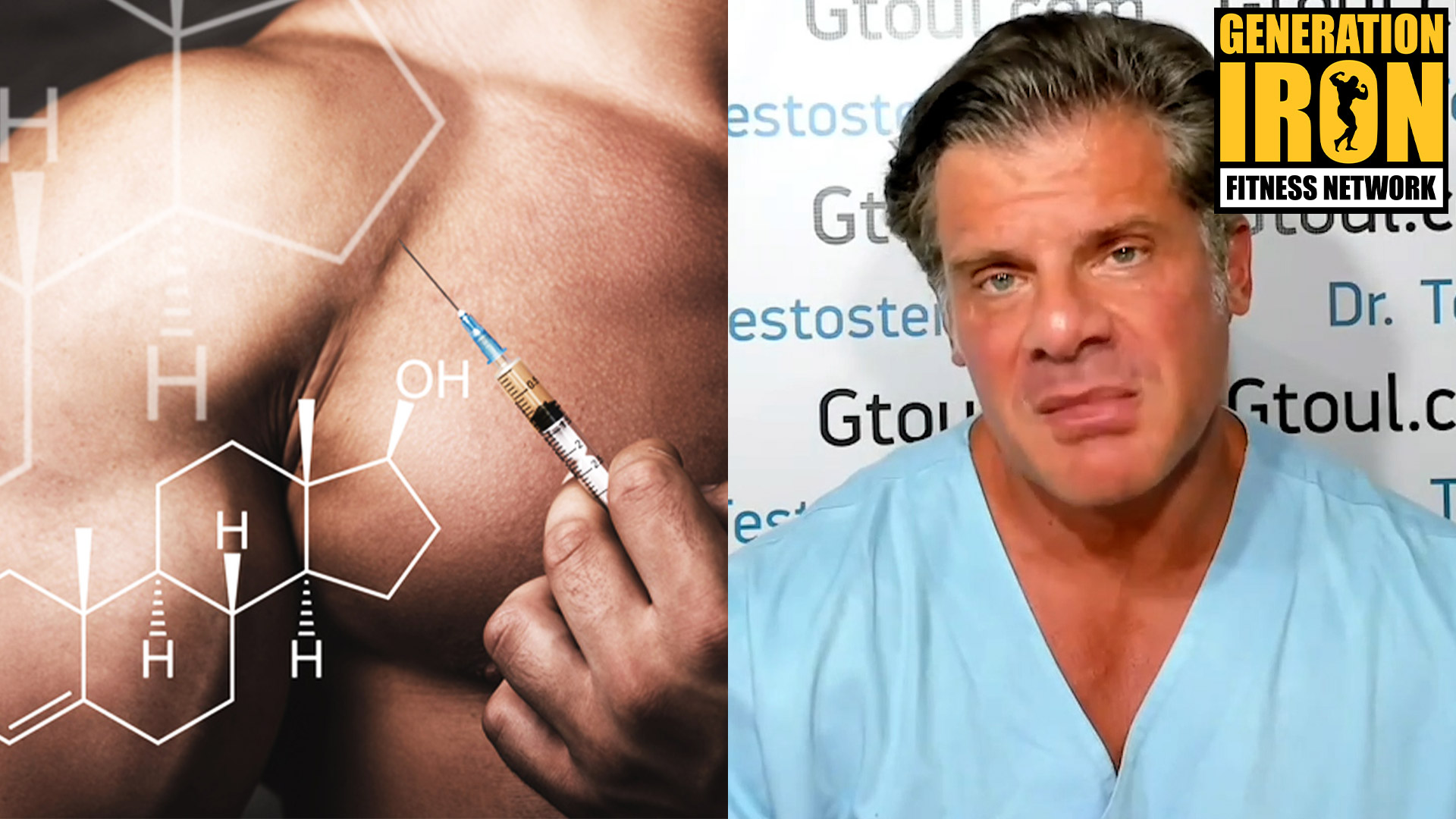
Dr. Testosterone: Young Steroid Users Will Have Low Natural Testosterone By Mid 30s
[embedded content]
Dr. Testosterone answers how long it takes for steroid use to deplete your natural ability to produce testosterone.
For those who have been following closely, it’s quite clear that continued steroid use leads to low natural testosterone levels. This long term use can have a very long term effect on testosterone after coming off PEDs for good. Usually, individuals will go into testosterone replacement therapy (TRT) for the remainder of their lives. This might beg the question – how long can someone use steroids without requiring TRT afterwards? In our latest GI Exclusive interview, Dr. Testosterone explains the factors that can affect how and when bodybuilders will require testosterone replacement therapy.
The topic of steroids in sports, including bodybuilding, is a hotly debated issue and has been for many decades. There’s no denying that long term steroid use can lead to serious health problems. But there are those who are skeptical of just how dire those health problems can become. One thing that is undeniable is its effect on natural testosterone production in the body.
During our conversation with Dr. George Touliatos, aka Dr. Testosterone, we asked him to go into detail about steroid use and testosterone replacement therapy. For how long can a bodybuilder use steroids before their body is unable to produce testosterone naturally? Is there a hard out moment that they can stop to prevent long term damage? Or will even the most casual of steroid users require TRT in their future?
Much like nearly all drugs, Dr. Testosterone explains it depends on a variety of factors. What kind of steroid the person is taking, what size of the dose, and how long of a break between cycles. Then add on top of it that each individual has their own genetic predisposition regarding testosterone production in the body. Some individuals who never use steroids still find themselves with low testosterone at a young age. It’s rare but it can happen.
So these varying factors make it hard to pinpoint an exact timeline for when a bodybuilder, or any steroid user, would face a permanent future on TRT. On average though, Dr. Testosterone seems to place the time limit at about 10 years.
“I guess it depends how early you start it. So if you start in your 30s, I think by your 30s you’ll be toast. And TRT is going to be inevitable,” Dr. Testosterone states in our interview.
He goes on to make clear that anything is possible on an individual level – and nothing is guaranteed. He’s known 30 year olds who have low testosterone and have never taken steroids in their lives. He’s also known 50 year olds with good natural testosterone despite typical aging factors.
Dr. Testosterone also goes into more detail about how testosterone works in the body as a whole. And how trying to artificially boost testosterone will always lead to eventual future issues. Even “kick starting” your testosterone via a booster shot will eventually lead to your body not only reverting back to normal levels – but perhaps falling even lower. It’s like a pendulum that gets more dangerous the more doses you take.
So how does one with naturally low testosterone boost it in a healthy manner? Unfortunately there is no easy trick. Dr. Testosterone explains that it takes time and a dietary habit changes.
You can watch Dr. Testosterone go into full detail about testosterone, TRT, and more in our latest GI Exclusive interview segment above!
